Gastrointestinal Parasites
What are the parasites that infect the gastrointestinal tract of sheep?
Main groups of gastrointestinal parasites and the disease syndromes they cause
Three groups of parasites infect the gastrointestinal tract of sheep:
- Roundworms
- Coccidia
- Tapeworms
The roundworms are the most important cause of disease and production loss in grazing sheep and so are the focus of these website articles.
What problems do roundworm parasites cause in my flock and how do I recognize them?
Gastrointestinal roundworm (nematode) parasites cause two disease syndromes in western Canada:
Caused by the roundworm Haemonchus contortus (the barber’s pole worm).
These parasites suck blood in the sheep abomasum (stomach) causing anemia, edema (bottle jaw), weakness, weight loss, and sometimes death if severe enough.
Caused by a number of roundworm species.
Most important: Teladorsagia circumcincta, Trichostrongylus spp, Nematodirus spp, Cooperia curticei.
Parasites in abomasum (stomach) and intestine (gut) and cause chronic diarrhea, weight loss/poor growth.
These problems only occur in sheep on pasture (or after being on pasture) and are not a problem in sheep with no access to grazing.
Humans cannot be infected with roundworms from sheep.
What causes Haemonchosis?
Haemonchosis is caused by Haemonchus contortus, also known as the barber’s pole worm (due to the spiral red blood-filled intestine of the worm). This is a very small roundworm (~2cm) (picture 1A) which feeds on blood in the abomasum and can cause anemia, weight loss, bottle jaw and even death in sheep (picture 1C). At necropsy, the carcass is usually very pale, and the worms may be visible in the abomasum (picture 1B). It is the most important roundworm in western Canadian sheep and resistance to several dewormers has become common.
One way to suspect the presence of Haemonchus contortus is to evaluate the color of eye conjunctiva by applying the FAMACHA scoring system (for more information, check the Famacha YouTube video in the Resources page).
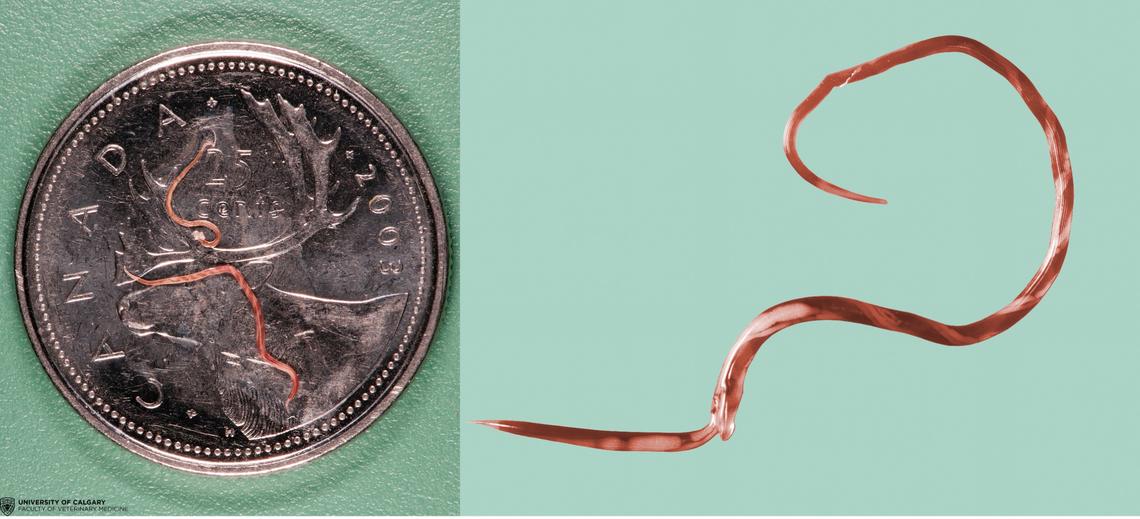
Picture 1A. Adult barber's pole worms (Haemonchus contortus). In the female worms, the pink intestine twines around the white reproductive tract (photo credit: Paul Gajda & Dr. John Gilleard).
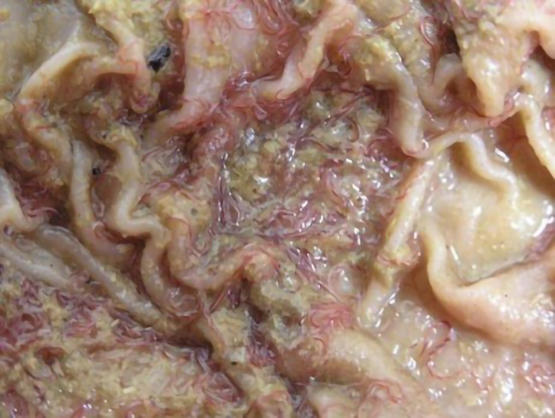
Picture 1B - Adult barber’s pole worms in the 4th stomach of a sheep
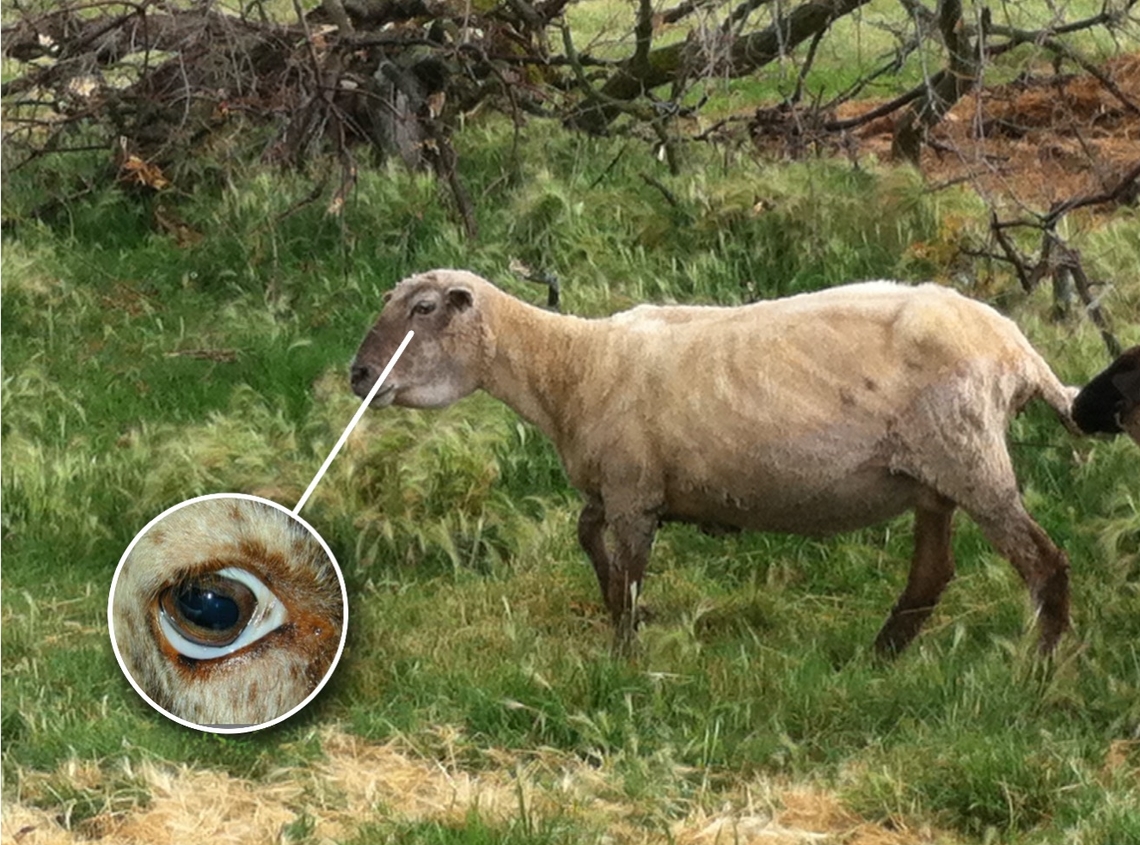
Picture 1C - Bottle jaw and pale (anemic) mucous membrane of the eye: 2 signs of infection with the Barber's pole worm (Photo by Graeme Boender)
What causes Parasitic gastroenteritis (PGE)?
PGE in sheep is caused by infection with a variety of different roundworm species in the stomach and intestines (gut). Sheep are often infected by multiple roundworm species at the same time. In western Canada, these can include species belonging to the genera Teladorsagia, Trichostrongylus, Nematodirus, Cooperia, Chabertia, Oesophagostomum or Trichuris. These are very small worms (mostly around 1-2 cm in length) and all sheep that are (or have been) grazing will have some of these parasites. The problems occur when they build up to large numbers (up to thousands per animal).
Signs of infection are similar between these different species of worms, usually diarrhea, reduced growth and weight loss with the severity of signs increasing with the levels of infection. Even infections that are not large enough to cause noticeable signs can result in decreased weight gain in lambs.
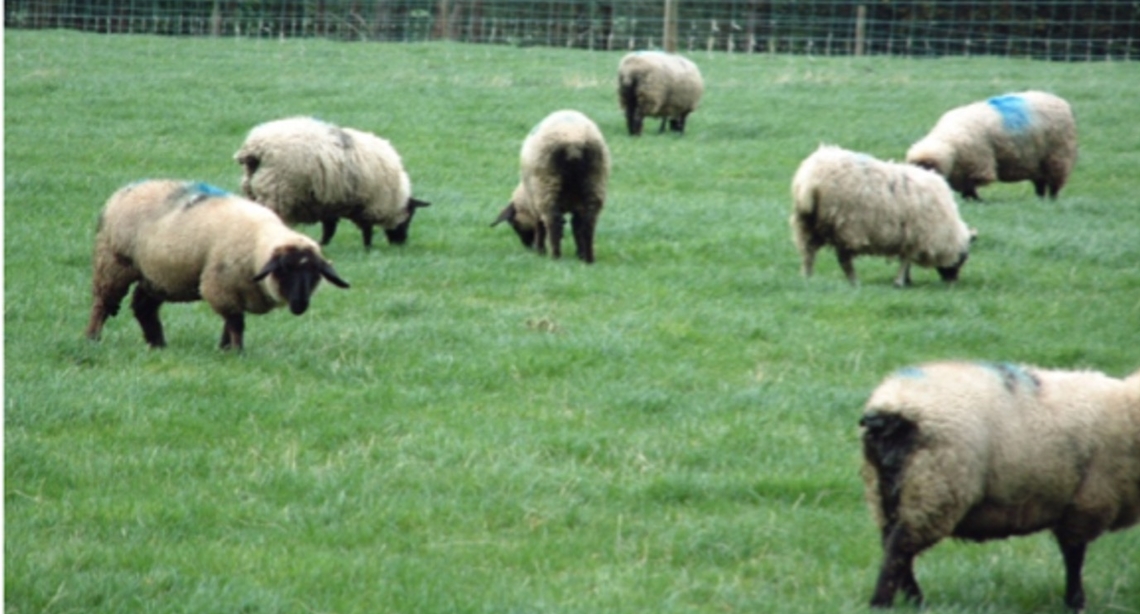
Picture 2. Dirty tails and hinds ends caused by parasitic gastroenteritis (photo credit Dr. Neil Sargison)
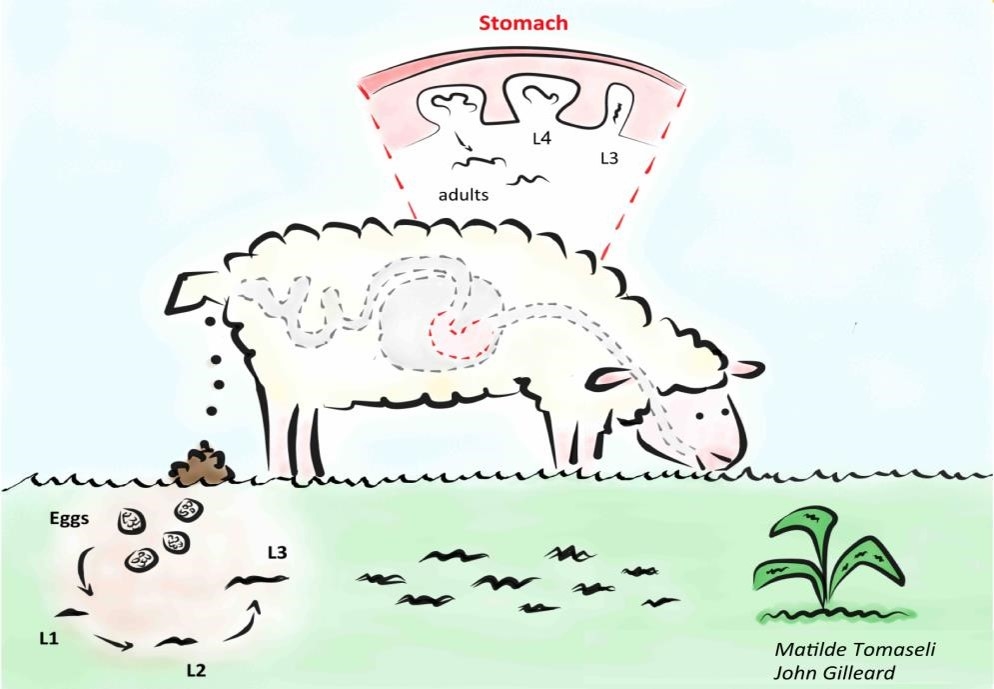
Picture 3. Life cycle of parasitic roundworms in sheep
The life cycle of parasitic roundworms of sheep
Adult female worms inside the sheep lay eggs, which pass in the feces. More eggs are laid by parasites in ewes around the time of lambing due to their suppressed immune system, this is called peri-parturient rise (PPR) in fecal egg output. Young animals in their first grazing season also tend to shed more eggs as they have not yet built up immunity to the parasites.
The eggs pass in the feces, hatch to first stage larvae (L1), then to second stage larvae (L2) still in the feces. They develop to infective third stage (L3) larvae and pass onto the grass of the pasture. The eggs hatch and mature to L3 only during the spring and summer months. L3 are the infective stage and climb onto grass to be eaten by sheep.
Sheep ingest L3 from the pasture. Once ingested, L3 develop to fourth stage larvae (L4) then to adult worms, which mature, mate and produce eggs in the gastrointestinal tract. The time from ingesting L3 infective larvae to adults and then eggs is called the pre-patent period and is typically between 16 and 21 days for most roundworms.
Effects of Canadian winter on the roundworm parasite
It is a common misconception that the western Canadian winters are too cold for roundworm parasites.
The parasites can do well here, even with our cold winters, but they cause disease and production loss during the grazing season. Although the stages outside the host only develop from the eggs to infective L3 stage on pastures in the summer months, the parasites have several strategies to survive the cold western Canadian winters.
Haemonchus contortus was originally a tropical parasite that spread across the globe over the last few hundred years with livestock movement. Consequently, its infective L3 stages do not tolerate freezing well and so they do not survive on pasture, or in the soil, over the winter. However, the adult worms survive inside the sheep over the winter. In addition, larvae that are ingested from pasture in the fall can arrest their development at the L4 stage and wait to mature until the next spring. This is called hypobiosis.
Roundworm species that cause parasitic gastroenteritis, such as Teladorsagia circumcincta, are naturally adapted to northerly temperate climates. They can survive as infective L3 on pastures in western Canada through the winter and then infect sheep grazing in the spring the following year. They can also survive inside the host in a way similar to Haemonchus contortus.
Other types of gastrointestinal parasites that cause problems in sheep
Eimeria ssp. (coccidia) and Moniezia expansa are other types of gastrointestinal parasites that can cause problems in sheep.
Coccidia. (Eimeria spp: protozoal parasites)
Coccidia are microscopic protozoa that affect lambs and young stock under 5 months old and can cause diarrhea and weight loss/poor growth (condition known as coccidiosis). They are only visible under the microscope. Unlike roundworms they can cause problems both in lambs at pasture and when housed in barns or dry-lots (with no access to pasture). Humans cannot become infected with Eimeria from sheep.
For more information about this important sheep parasite, check in the Resources page for the Handbook for the Control of Internal Parasites of Sheep and Goats, (p42-48).
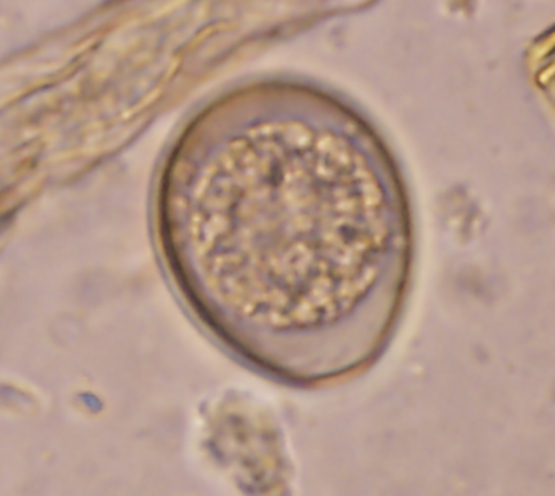
Picture 4. Oocysts of Coccidia seen under the microscope. (Photo credit - Dr. Mani LeJeune)
Sheep tapeworm (Moniezia expansa)
These large tapeworms do not typically cause disease or production loss in sheep, but adult worm segments passed in the feces are easily seen and this is common in western Canada. You should seek advice from your veterinarian if concerned about these parasites. Humans cannot become infected.
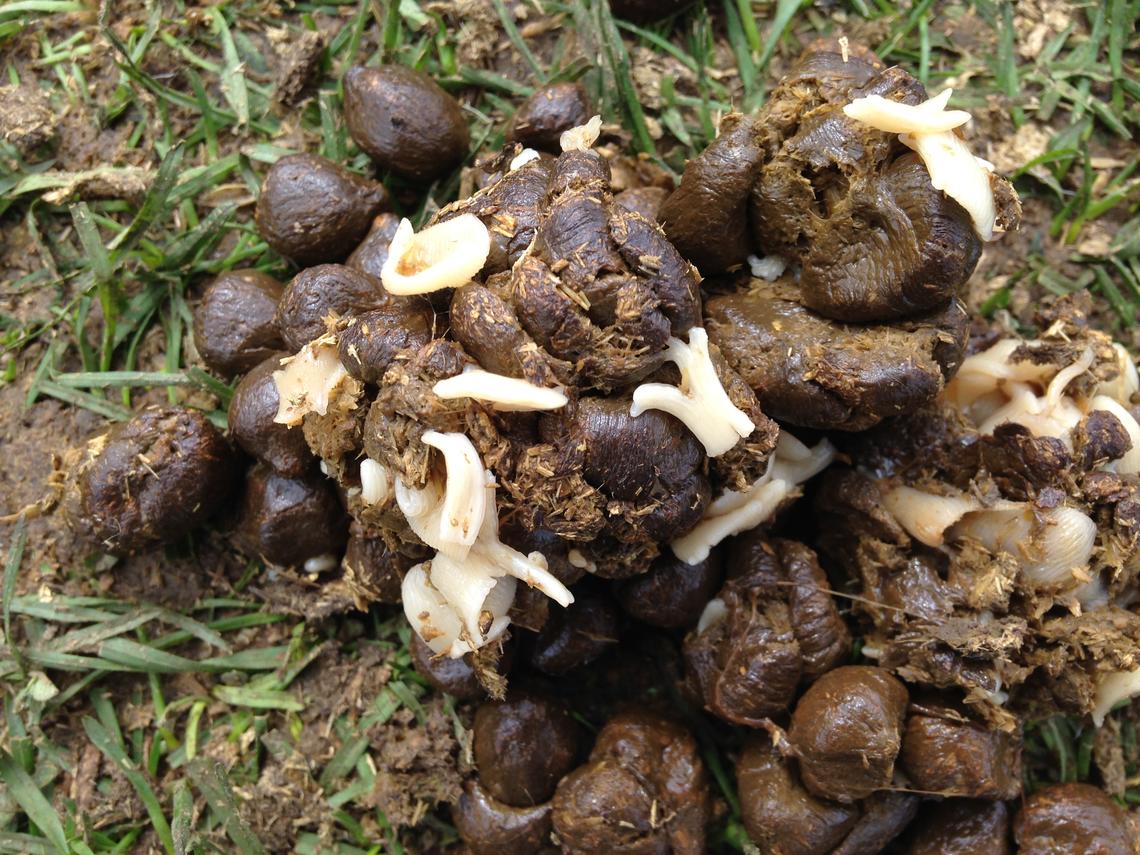
Picture 5. Sheep tapeworm. (Photo credit - Dr. Lana Swain)
